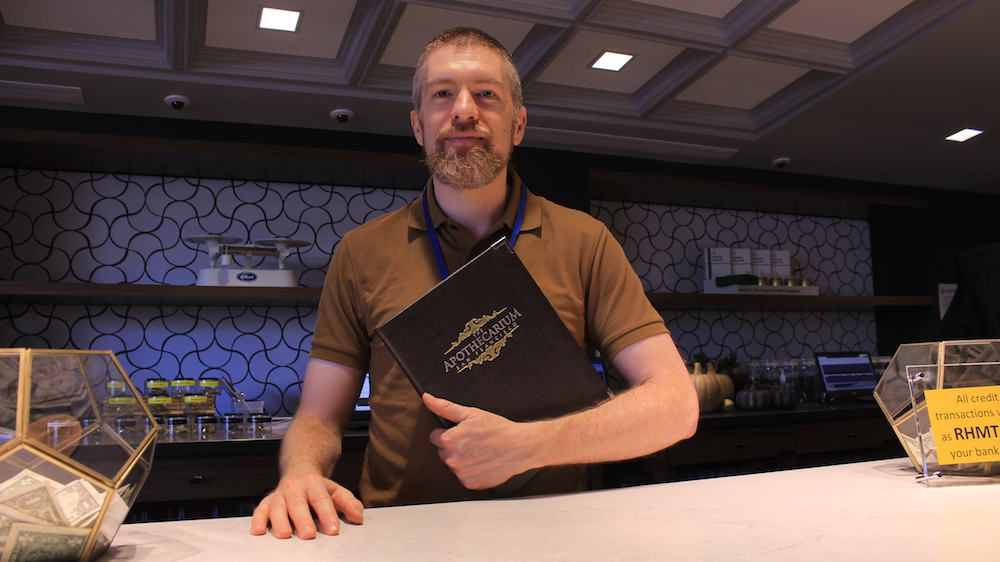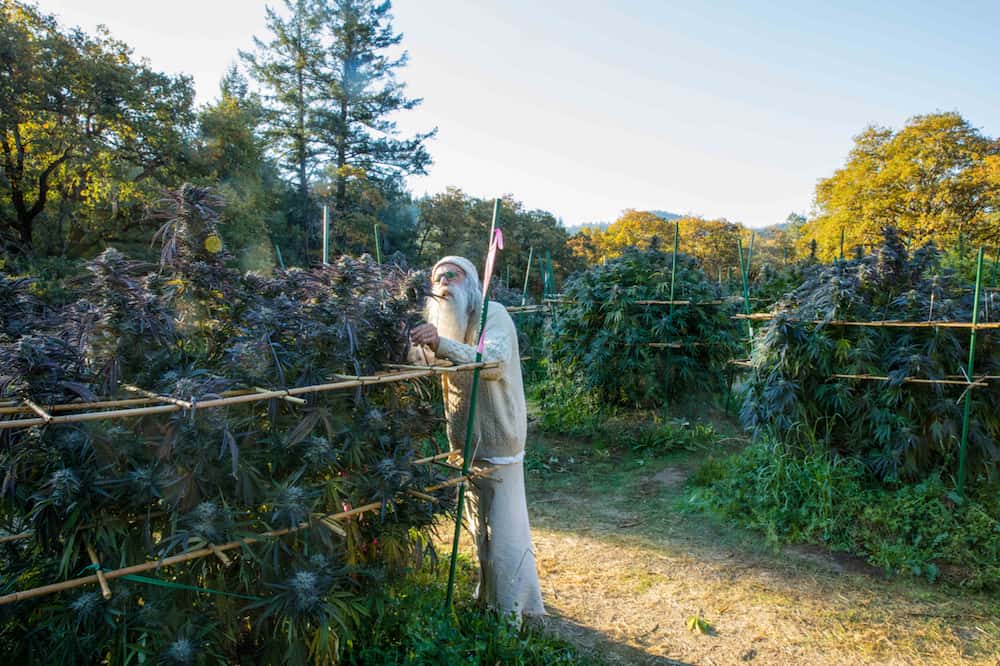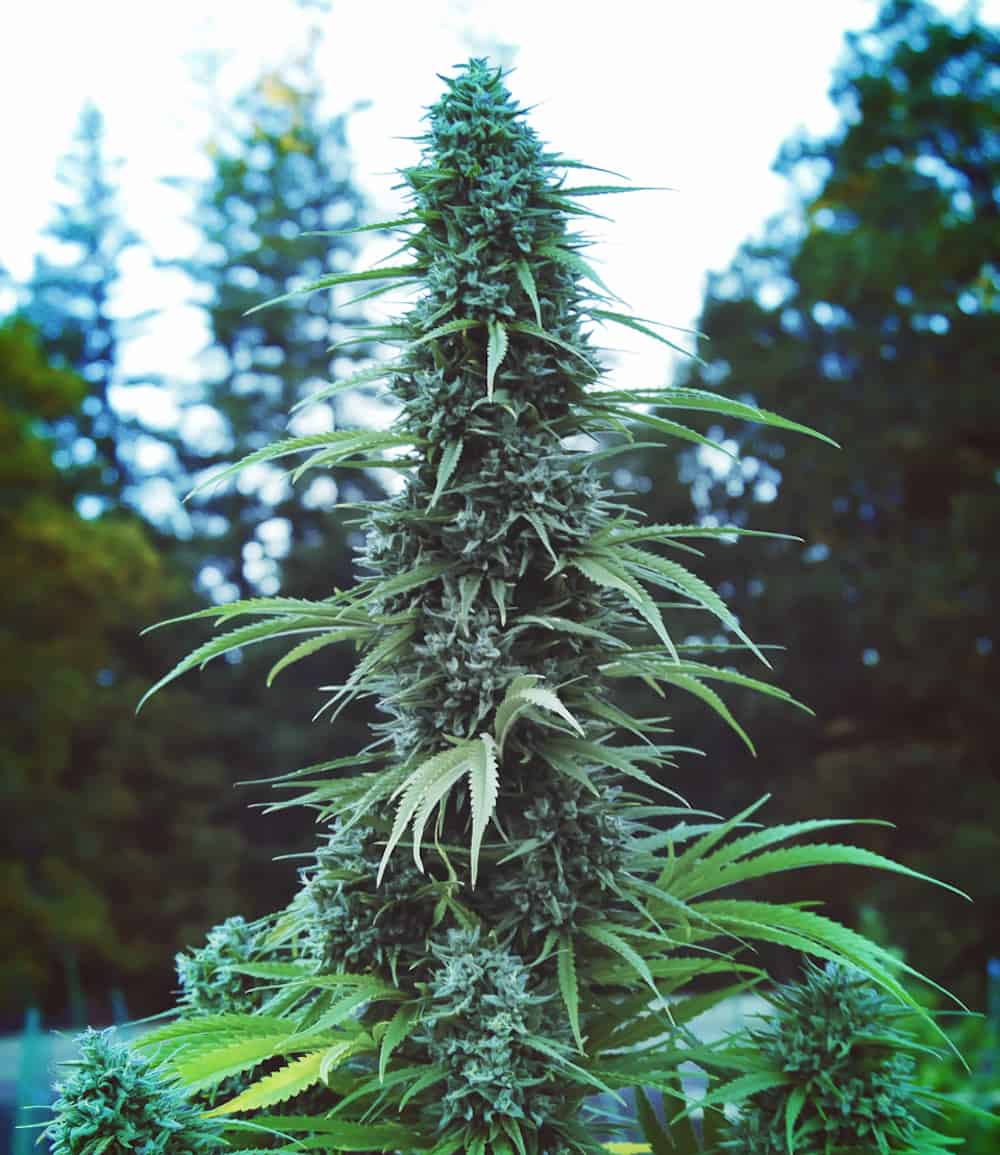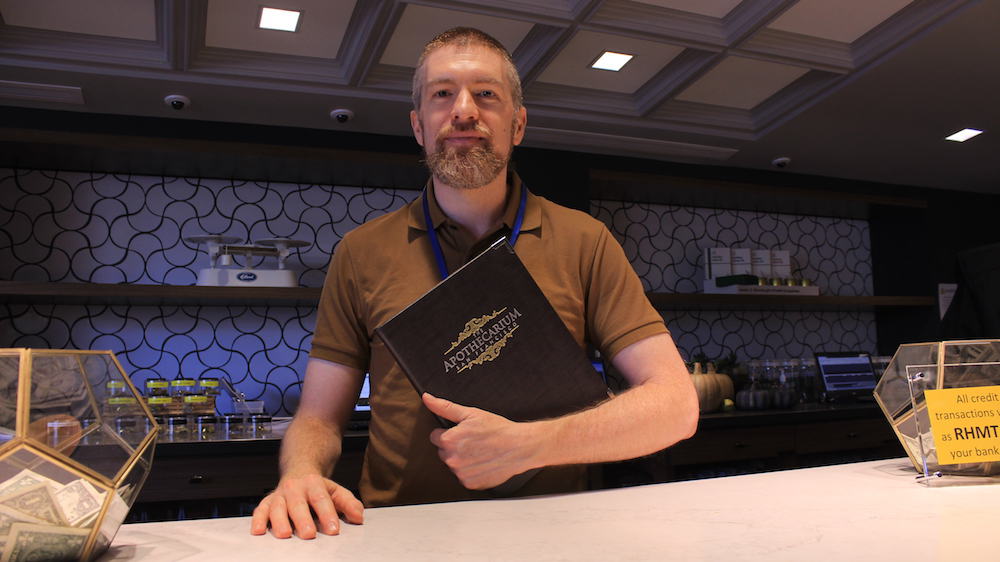It comes as no surprise that since January 1st of this year, California has seen a significant rise in cannabis sales. Within the state, the current $2.7 billion industry is predicted to nearly double by 2020.
Part of this has to do with the number of people trying to make a buck off the new market. Within the first six months alone, California saw an increase from 1,272 licenses to 6,421. Yet, the more important factor is the evolving perspective of cannabis happening across the country. Just two decades ago, only 31 percent of Americans felt the plant should be legalized. In 2018, that number doubled—making the support for recreational weed at an all-time high.
Businesses are taking note of this new wave of opinion. Although many are in favor of legal cannabis, not everyone knows how cannabis really works.
San Francisco’s dispensary the Apothecarium is a prime location for newcomers to discover these answers. As Elliot Dobris, Chief Marketing Officer, informed us, “We’re working every day to change people’s impressions of what a dispensary could be and we hope others will do the same.”
These efforts are to create a one-on-one service which seeks out exactly what the customer is looking for in their cannabis. Instead of having a display of cannabis and oils, the Apothecarium offers what looks like a restaurant menu which gives as much information about their products as possible. Furthermore, they offer free educational classes to the public about how cannabis can be used for the sake of medicinal purposes.
With that in mind, we can begin to see that the industry isn’t growing simply because there were a bunch of potheads waiting to legally get high. Rather, there was a market hidden beneath the stereotypes previously attached to marijuana. A market which Dobris says, “we’ve only scratched the surface of.”
A New Market for Cannabis

Paul James/ High Times
It’s often forgotten that behind the great counterculture which pushed for cannabis legalization were a possibly greater number of people suffering from a variety of illnesses and diseases, desperately seeking answers. For many, cannabis offers this answer and more. Inevitably, these are the people who will continue to drive the industry to $5 billion dollar prediction mentioned above.
As Dobris told me, the whole idea for the Apothecarium came about when the co-founder, Ryan Hudson, walked into a medical dispensary for an illness he hoped to alleviate through cannabis. An older woman in front of him was also seeking relief. The two were in awe about how daunting just the sight of it all was; jars upon jars of grass sided by various smoking accessories.
It seemed a bit too much for someone trying to figure out how to better their medical condition. Furthermore, the people behind the counter didn’t seem to know much about what each strain actually helped with. They only knew how stoned it could get you. So, seven years ago, the Apothecarium was founded in hopes of changing perspective. With legalization, this perspective naturally took a turn for the better as not only did those suffering from medical issues open their eyes to cannabis, but so did those with a sense of curiosity.
In Doris’s words, “We were one of the first of three dispensaries in San Francisco to open to the public for recreational sales on the first day it was allowed. And we saw a huge jump in the number of people coming in and the number of sales.” Since that jump, the Apothecarium has seen a steady rise rather than what might be expected as something exponential.
In Southern California, another already founded dispensary, New Generation, likewise saw an initial jump in business during January and a couple months after. Followed by a steady rise. However, as with many dispensaries New Generation’s CEO, Justin Shively tells us, “come July, when the new regulations set in—with labeling, packaging, distribution—when we were actually allowed to have our own product in house, it really changed dramatically for us and [our business] actually started to regress.”
The regulations which came this past July have hit both businesses and consumers alike. “It really dictated on what product we had because it had to be repackaged,” Shively says. “Now, with the repackage, it allowed them to take our eighths to $50, $60 and they’re charging us $30. When prior to July, my eighths were $35.”
So, what does this mean for new businesses trying to make a name in this industry?
The good news is Shively sees the industry “going nowhere but up.” Through all of the edicts which we’ve seen since legalization, he seeks out the positive within it. “We gotta remember when we’re talking about something that comes with regulation, you’re gonna have more exposure. With more exposure, you’re going to have more eyes. More people now believing that it’s okay.”
This goes hand-in-hand with what Dobris told us about the entire purpose of his dispensary. To reach out to a new market. One of which wouldn’t of smoked pot prior to legalization. And just like the Apothecarium, New Generation is seeing (and seeking) to continue building out their business to reach a larger market.
Still, it should be noted, both of these company’s determination isn’t defined by the potential payout the legal industry can bring. Rather, it’s about reaching out to those who are uninformed about cannabis and to teach them the true benefits which have been blinded from the public for so long.
This is good news for future generations as they’ll most likely not have to face the similar backlash we did for toking up. But, if these company’s market is primarily that of a new consumer, what about those who were smoking long before cannabis was legal?
An Old Market Beneath the Reports
There’s been little discussion about the illegal market which remains within the state. Through statistics and reports, it seems as though everyone in California has conformed to purchasing their cannabis through legal means. But veteran consumers are well aware the legal price just isn’t worth it.
As a college student in San Francisco, I can confirm this. The good majority of my weed-toking friends are, in fact, avoiding dispensaries as none of them want to pay the 15% sales tax. To some, this might seem ridiculous. We fought for legal cannabis and now we’re not going to make the best of it? To others, it’s understandable. When you have to work your ass off day-by-day just to get by and need a fat blunt at the end of the night to forget about the fact that you have to do it all over again tomorrow, you’re going to seek out the cheapest supply.
In fact, the illegal market is so strong in California that Governor Jerry Brown recently distributed $14 million to “target illegal cannabis activity with an emphasis on complex, large-scale financial and tax evasion investigations.” This problem goes beyond the consumer. Many distributors are, likewise, finding it difficult to make such ridiculous tax payments. As Vice reported, many dispensaries create the allure of a storefront while making illegal sales out back as a means of, “supplementing their income.”

Swami Chaitanya and Nikki Lastreto/ Courtesy of Amy Carr
Still, it can’t be forgotten: all this weed has to come from somewhere. Though we know of companies such as Honey Dew Farms LLC and Central Coast Farmer’s Market Management LLC, have replicating big agriculture’s production system as a means of meeting the legal demand. But if the illegal demand is just as high, where the hell is it coming from?
I recently made a call to a farm up in the Emerald Triangle—arguably, the largest and greatest cannabis-producing region of the country – to have a discussion with Nikki Lastreto and Swami Chaitanya. Their legendary farm, Swami Select, has been a prominent legal supplier of various dispensaries across California for some time now. However, they’ve seen how legalization is affecting the little guys and know well the black market for cannabis is doing much better than the legal.
“An awful lot of people are having difficulty selling because there just aren’t that many dispensaries out there,” Chaitanya informs. “There used to be maybe a thousand dispensaries in LA alone [when California was only medically legal] and now there’s only ten. So, the whole thing is totally topsy-turvy.”
The Grower’s Perspective
An important factor of these legal issues is the fact that the state has a long list of rules and regulations which must be followed in order to grow and/or sell. Furthermore, each of California’s 58 counties has their own rules and regulations when it comes to legal cannabis. In fact, 40 of those counties don’t allow marijuana production or business of any kind at all.
With that in mind—along with the excessive taxes—it can be seen why many growers (especially, new timers) are having difficulty making a business for themselves. Swami Select is lucky in the sense that they already have a brand. As Chaitanya tells us, “Nobodies complaining about our price which is a premium price.”
Still, that isn’t to say they haven’t had issues of their own through the whole legal process. In January of this year, there was a huge crash in cannabis production due to two key factors:
- The demand was through the roof.
- Dispensaries were suddenly required to only sell weed with a permit – which very few growers had.
Swami Select was a victim of this sudden change in agenda. Though the farm had plenty of cannabis to supply an eager market, they weren’t allowed to sell any of it until they gained a permit. Which they did in March.
Through Chaitanya’s perspective, “It’s impossible to describe this whole thing that happened because it was so complex, so confusing, and so stupid.” As the months rolled on, dispensaries did eventually get their product back. However, in July of this year, they were hit with another regulation—new labeling and testing requirements. “When July came around, there was nothing on the shelves and dispensaries were supposed to destroy it all.”

Courtesy of Jim Olive
So, how did this affect growers themselves? You’d figure they had a lot more demand considering all that was wasted. But what happened was quite the opposite. In the traditional market, prior to recreational legalization, there were tens of thousands of licensed growers. That number dropped significantly to around 3,500 licenses.
The jarring truth is the state of California is making it extremely difficult not only businesses and growers alike to even have a chance at the market. “Everything is more extreme, more harsh, more particular, for cannabis than any other agricultural demand. Just one little example, if I have a chicken coop, I can put it three feet from my neighbor’s property. If I’m growing cannabis, I have to be 50 feet from my neighbor’s property.” A supremer example, some marijuana farms have been denied access to the amount of water necessary to cultivate.
Farmers are now getting together to try and figure out how to survive with all the insistence of this legal industry. One organization, the Mendocino Cannabis Industry Associations, seeks for what might seem like competing farms to get together and create a thriving region of success.
And with organizations as such, smaller farms such as Swami Select feel less threatened by a big agriculture commodity attacking the cannabis industry. In fact, as Lastreto tells us, “we aren’t threatened by those corporate grows because what they’re gonna grow is something totally different. It has to be organic, but it’s not going to be in living soil outside full of sun and all the wonderful conditions we have. The corporate grows are growing for the masses. Up here in the Emerald Triangle, we grow for the connoisseur.”
A Final Word

Courtesy of Sarah Johnson
So, what’s California looking like after a year of legal weed? The major differences are in both regulations and new perspectives. Businesses and growers are seeing a high amount of difficulty in keeping up with legal adjustments, yet, new people are opening up to cannabis and accepting it for what it should have always been accepted as.
The legal industry brings both its good and bad.
Through our fight for legalization, we had no way of predicting the harsh reality of taking this Schedule I substance and bringing it to the masses. We were too caught up in notions of our own liberty to even wonder where things can go wrong. Yet, as we’ve reviewed in this article, businesses are struggling just as much as those supplying them.
Whenever your next puff is, I suggest considering where it came from. Maybe reach out and give your thanks. For without the people fighting to allow this industry to progress, you and I wouldn’t have the ability to walk around blazed out of our minds. We wouldn’t have the freedom we fought so hard for.











